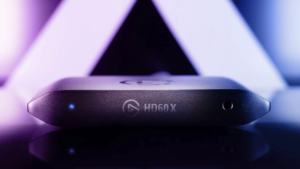FrameView is Nvidia’s New Standalone GPU FPS Recorder Windows 10 App For Gamers

Comments
This is an interesting one. Nvidia felt that there was a gap in the market for an FPS recorder, that worked outside of their graphics card software, Nvidia GeForce Experience. As the Nvidia GeForce Experience already comes with a turn on and off FPS counter for your games, but only works with Nvidia cards. And so for that part we would have to agree, there is a need for an independent FPS recorder. As it would be nice to have one reliable, open-source choice for recording in game benchmarks that everyone could gravitate towards as a standard. It seems Nvidia’s new FrameView is a step towards achieving this, although it doesnt appear to be open source.
We here at Game-Debate have thought about building this very type of thing, many times. Nvidia’s tool is built around a revised version of PresentMon, which itself has an opensource licence and originally built by Intel.
What data does FrameView report on?
This single Nvidia built app outputs a configurable overlay in-game showing Rendered Frame rates, Displayed Frame rates, 90th/95th and 99th Percentile Frame rates, Overall TGP power useage for the whole graphics card, Power Per Watt performance, power for just the GPU chip is shown as CHP.
What features does Frameview have?
Configurable overlay Real-time power performance & performance per Watt Can capture data in Direct X 9,10,11,12, Vulcan, OpenGL Works on desktop Overlay does not currently work in Direct X 9, 10 or Vulcan, but will still record results. Only works in Windows 10 operating systems Lightweight app that minimizes additional system strain Download size is only 23MB It supports G-Sync, Non-G-Sync, FreeSync, ASync single monitor setups Can run and monitor on a multi-GPU hardware PC system Will work across Nvidia, AMD, Intel graphics systems
So thats some pretty good stuff right there. The one reported issue with this FrameView tool is that when reporting Power useage it doesnt always display an accurate Wattage power output on AMD hardware, but I think I can live with that.
When up and running the FrameView recorder can show us FPS at two locations of the graphics creation journey. Take a look at the following image to see that journey and notice Rendered FPS. This is the first figure that you can have displayed. It is the initial work and number of frames per second your GPU is creating. Then down the far right of the journey we see Displayed FPS. Yup thats the number of frames per second we actually get to see on our screen.
So from the Rendered FPS and the Displayed FPS we can see the type of FPS loss we are suffering. So from looking at this we could make informed decisions that are specific to our graphics card, on a particular game and then adjust the graphics options we are running with to get the best FPS with the lowest FPS loss.

Whether many of us would really do that is another matter, but its more numbers and you know we all like to look at numbers.
Speaking of numbers, FrameView will save performance data as csv log files that you can open up easily in programs like Excel and then turn into your own graphs. Because of this exact feature Game-Debate is going to build this into our member profile area, where we can share our data with each other and display our current game performance with a particular hardware setup.

Here is the FrameView control panel. Its nice and simple with a few things to turn on and off.

The percentile data basically gives an impression of the smoothness of the game, by removing the freak outlying FPS figures from the results. As there will always be occasional very high spikes and very low dips in your frame rate reading but they dont actually reflect your general experience. But you can turn them on and off.
As this has been developed by Nvidia themselves it means we should be able to trust they have sorted it out to be as accurate as possible, across everything or they will be called out when someone digs into the tests and made to look shady. And considering we have normally been using third party built software to record or report our FPS it seems like getting FrameView from one of the giants GPU vendors is a step in the right direction. Now we just need it to be completely open source and for AMD to validate it as well with their hardware and we then have a unified reporting diagnostic tool.
You can grab the FrameView tool for Free and there is a FrameView PDF Guide. Let us know below what you currently use to track your game FPS and whether you would be up for making this our GD FPS tool that we can integrate into our site.
Our Favorite Comments
17
“If you answer "no" in the poll I would love to hear why you think not? Perhaps there is a different solution you can think of? Let us know. F”
Felix –
11
“Nice altough is still prefer Rivatuner.”
TMCThomas00 –
4
“this is suspicious, it’s not open source and no one is going to use this app with amd gpu, so I think there is something behind here…”
zygisrudys –
2
“I know, that’s the only think I’ve ever used shadowplay or relive for. Third party FPS counters were all too clunky for me.”
Adamiros –
1
“This seems really good. I’ll probably give it a look. Hopefully they solve the issues with AMD systems soon, but that doesn’t seem to be a big deal.”
TheEmperor96 –







